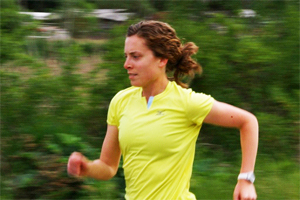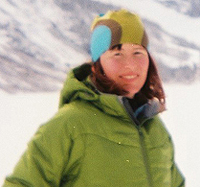Does Running Make You Smarter?
By: Nikki Reiter
 The time to return to school is just around the corner and you’ve spent all summer training and chasing personal bests on the roads and trails. Did you also realize that establishing these habits is also going to make you smarter? More specifically, aerobic exercise (such as running) has been shown to have positive effects on our ability to reason and process thoughts. Dr. Paul van Donkelaar is a professor of neuroscience at the University of British Columbia Okanagan Campus in the school of Health and Exercise Sciences, met with me to discuss how exercise leads to improved cognitive functioning. Once an elite rower, Dr. van Donkelaar is now an avid runner who likes to train and race for health, to be social and enjoy the occasional beer 😉
The time to return to school is just around the corner and you’ve spent all summer training and chasing personal bests on the roads and trails. Did you also realize that establishing these habits is also going to make you smarter? More specifically, aerobic exercise (such as running) has been shown to have positive effects on our ability to reason and process thoughts. Dr. Paul van Donkelaar is a professor of neuroscience at the University of British Columbia Okanagan Campus in the school of Health and Exercise Sciences, met with me to discuss how exercise leads to improved cognitive functioning. Once an elite rower, Dr. van Donkelaar is now an avid runner who likes to train and race for health, to be social and enjoy the occasional beer 😉
Cognitive Function and Aging
It has been shown that a higher level of aerobic fitness later in life is positively associated with cognitive functioning. The mechanism for this ‘better thinking power’ is due to increased oxygen-carrying blood flow to the brain, which usually declines as we age. Furthermore, decreased brain blood flow can decrease our motor performance, or our ability to perform tasks with our body. Decreased brain blood flow means that less oxygen and nutrients are making their way to the neurons and astrocytes of the brain, making it more difficult for them to process information. When we process information more slowly or inefficiently, our behaviours – whether they are movements, thoughts, feelings, or emotions – start to suffer.
So Why Does Exercise Help?
The cognitive changes associated with decreased brain blood flow don’t often affect every day functioning; however, they may affect the ability to learn new skills, or those that require a fast response. Most importantly, it’s thought that exercise may be able to ward off cognitive disorders such as vascular dementia or Alzheimer’s disease. Other benefits include improved long-term memory and spatial abilities. Simply put, aerobic exercise helps our brains maintain the ability to better adapt and respond to the demands we place on it.
Good News for All Generations
Researchers have shown that young to middle aged endurance-trained individuals have higher resting levels of blood flow to the brain. This is highly encouraging for immediate gains, such that maintaining a regular exercise regimen could potentially lead to improved learning and exam writing performance. Of course, long term gains include a potential lifetime of strong mental health.
The other good news is that otherwise sedentary elderly people who start an exercise program can attain some of the same benefits in brain blood flow and cognitive function that are observed in people who have exercised throughout life – so it is never too late!
Happy Running!
***
 Nikki Reiter holds a master’s degree in biomechanics and is a Mizuno Running Brand Ambassador and the Women’s Cross Country Running Head Coach at the University of British Columbia Okanagan campus in Kelowna, BC. She is also the Laboratory Coordinator in the School of Health and Exercise Sciences at UBC Okanagan where she facilitates undergraduate laboratory learning.
Nikki Reiter holds a master’s degree in biomechanics and is a Mizuno Running Brand Ambassador and the Women’s Cross Country Running Head Coach at the University of British Columbia Okanagan campus in Kelowna, BC. She is also the Laboratory Coordinator in the School of Health and Exercise Sciences at UBC Okanagan where she facilitates undergraduate laboratory learning.






 By: Magi Scallion
By: Magi Scallion Born in Nova Scotia and emigrating to British Columbia via Ontario and Alberta, Magi has been running the entire way. Primarily defined as a cross country ski racer, Magi has competed nationally and internationally in that sport. The highlight of her career was competing in the World University Games and the World Cup races in Canada in 2007. Cross country skiers rely heavily on running for cross training and Magi has become an accomplished trail and mountain runner, representing Canada at the World Mountain Running Championships in 2005 and the winning numerous national championships medals.
Born in Nova Scotia and emigrating to British Columbia via Ontario and Alberta, Magi has been running the entire way. Primarily defined as a cross country ski racer, Magi has competed nationally and internationally in that sport. The highlight of her career was competing in the World University Games and the World Cup races in Canada in 2007. Cross country skiers rely heavily on running for cross training and Magi has become an accomplished trail and mountain runner, representing Canada at the World Mountain Running Championships in 2005 and the winning numerous national championships medals. 




 Our Magazine
Our Magazine Previous Release
Previous Release
